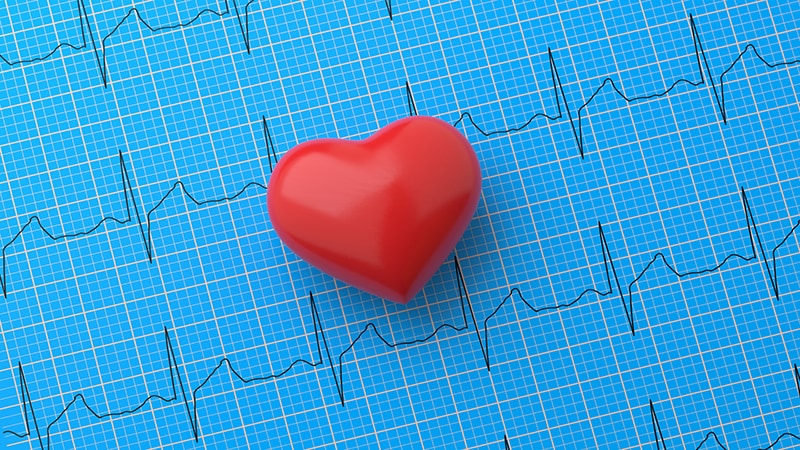“Get up, stand up” is the message of a study of sedentary adults who were overweight or had obesity and metabolic syndrome — and therefore at risk of type 2 diabetes.
Those who spent more time standing had greater insulin sensitivity, indicating less likelihood of developing diabetes — independent of fitness, adiposity, and time spent sitting or being physically active.
The findings suggest that “standing more might be beneficial especially for people who are not otherwise physically very active and are at risk of type 2 diabetes and heart disease,” lead author Taru Garthwaite, a PhD student at the University of Turku, in Finland, told Medscape Medical News in an email.
The study was published online in the Journal of Science and Medicine in Sport.
The 64 middle-aged participants wore an accelerometer (a research device similar to a Fitbit) while awake (excluding times when they were exposed to water, such as when showering or swimming) every day for 4 days.
On average, they wore the accelerometer for 14.5 hours/day, and on average, each day they spent 10 hours sitting, 2.7 hours performing physical activities (typically light housework or walking), and 1.8 hours standing (which could be in bouts as short as 6 seconds).
‘Move More‘ Message Should Not Be Changed to ‘Stand More‘
Based on the study findings, “the public health message of ‘move more’ should not be changed to ‘stand more,’ because greater health benefits are likely achieved with increased volume and intensity of physical activity,” Garthwaite stressed.
“However, for those who are sedentary, who do not meet physical activity recommendations, and have increased risk for type 2 diabetes and heart disease,” she continued, “increasing standing time could potentially be an additional aspect to help in the prevention of chronic diseases.”
Moreover, “replacing part of daily sitting time with standing might be a more easily attainable goal than increasing physical activity,” she suggested.
This could be done, “for example, by using sit-stand desks at work and standing while talking on the phone or waiting for a bus at a bus stop.”
However, it was a relatively small study population, Garthwaite acknowledged, and “based on our study we can’t make interpretations of causality or what the optimal pattern or length of standing bouts to break prolonged sitting might be.”
Further research is needed to “aid in development of interventions, policies, and guidelines for type 2 diabetes prevention in inactive high-risk populations,” Garthwaite and coauthors state.
Sedentary Behavior, Fitness, Standing, and Diabetes Risk
Sedentary behavior is a risk factor for type 2 diabetes, the researchers note.
And low cardiorespiratory fitness is a risk factor for insulin resistance (impaired insulin sensitivity, where the body does not react to insulin normally and blood glucose levels rise), which in turn, is a predictor of type 2 diabetes.
Moreover, sedentary behavior combined with low fitness increases the odds of having metabolic syndrome, defined as three of the following five conditions: large waist circumference (≥ 94 cm for men and ≥ 80 cm [31.5 inches] for women), high triglycerides (≥ 1.7 mmol/L), low HDL-cholesterol ( 5.6 mmol/L).
However, it is not clear how sedentary behavior, breaks in sitting, and bouts of standing affect insulin sensitivity, assessed using the gold-standard hyperinsulinemic-euglycemic clamp method, in sedentary adults with metabolic syndrome.
To investigate this, the researchers analyzed baseline data from a clinical trial of 64 adults recruited from the community in 2017-2018 who were 40-65 years old, sedentary, and inactive (2, who met the criteria for metabolic syndrome and did not smoke or have a previous cardiac event or diabetes.
That trial is investigating how replacing 1 hour/day of sitting with light activity affects insulin sensitivity, body fat percentage, and other measures over 6 months.
The 37 women and 27 men were a mean age of 58 years and had a mean BMI of 32 kg/m2.
On average, during 4 days, participants took 5149 steps and 29 breaks from sitting each day.
Standing more, taking more steps, and having better VO2 max (a measure of fitness or exercise capacity, determined by cycle ergometry) were each associated with greater insulin sensitivity.
These characteristics were also associated with less insulin resistance (ie, lower homeostatic model of insulin resistance [HOMA-IR] and lower fasting insulin, both surrogate markers of insulin resistance) — all after adjusting for sex, age, and time spent wearing an accelerometer.
Taking more breaks from sitting was associated with greater insulin sensitivity (but not with less insulin resistance) after similar adjustments.
However, after further adjusting for body fat percentage, only spending more time standing remained associated with less insulin resistance — even after further adjusting for sedentary time, physical activity, and fitness.
Therefore, “adiposity appears to partially mediate the relationship between sedentary behavior, fitness, and insulin sensitivity, further highlighting the importance of healthy body composition for metabolic health,” the researchers write.
The study was supported by the Academy of Finland, the Finnish Cultural Foundation, the Finnish Diabetes Research Foundation, the Hospital District of Southwest Finland, and the Juho Vainio Foundation. The authors have reported no relevant financial relationships.
J Sci Med Sport. Published online August 14, 2021. Full text
For more diabetes and endocrinology news, follow us on Twitter and Facebook.
Note: This article have been indexed to our site. We do not claim legitimacy, ownership or copyright of any of the content above. To see the article at original source Click Here













